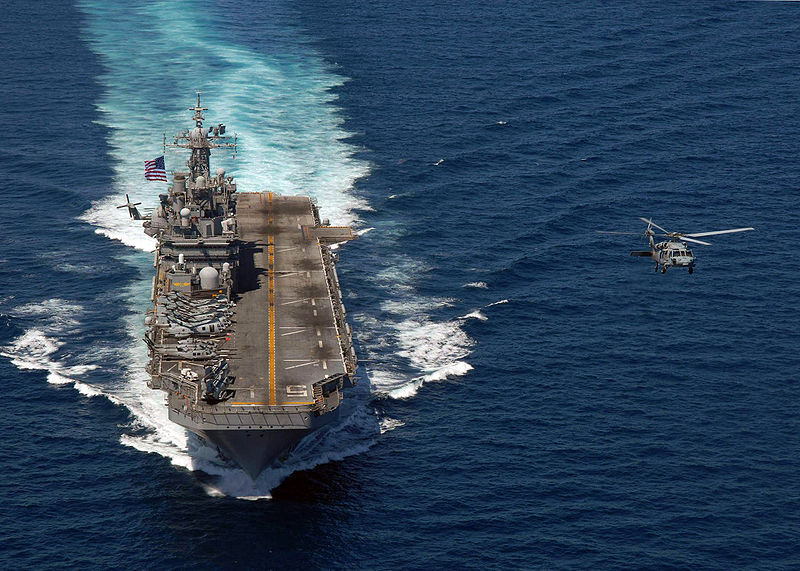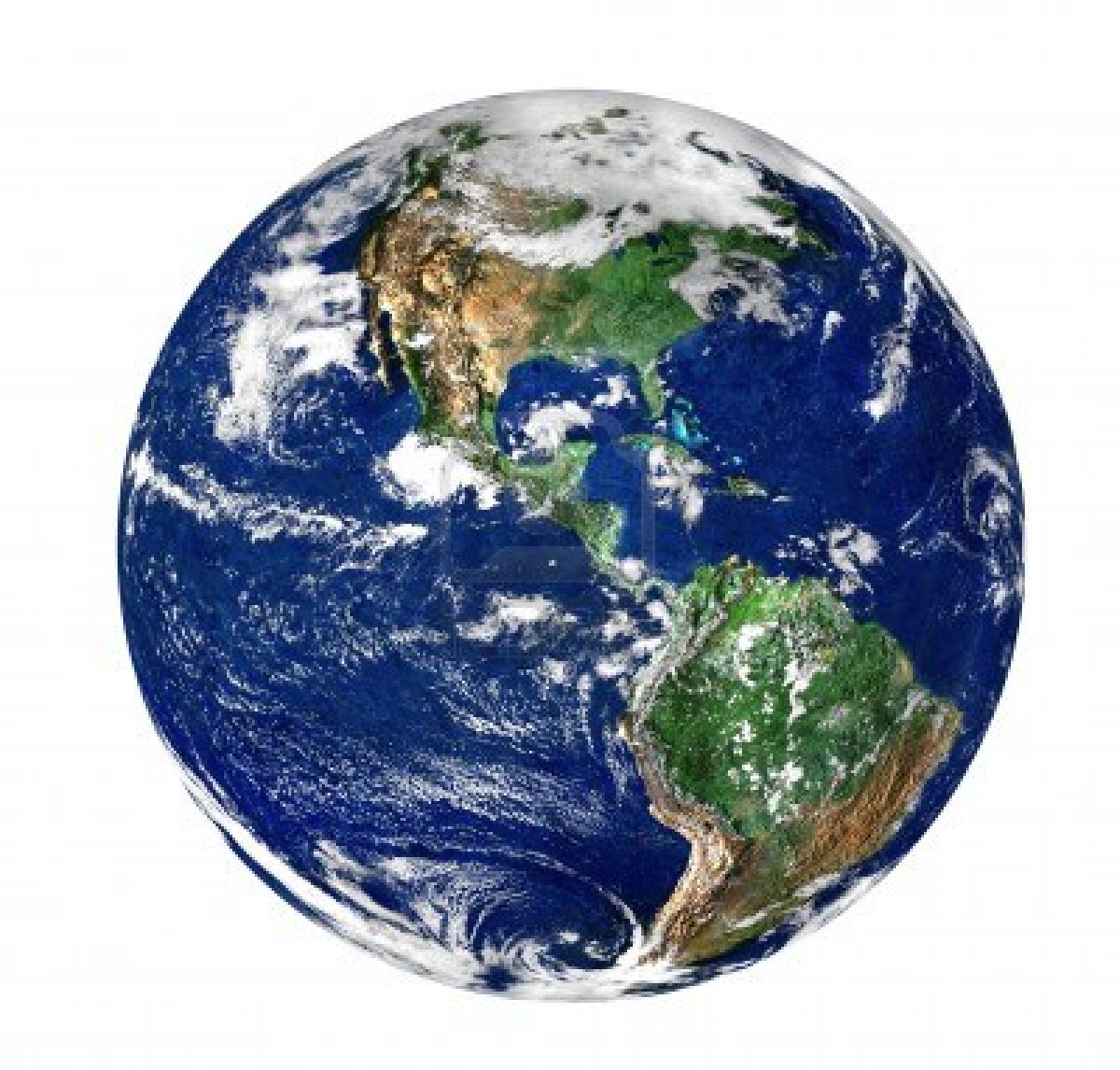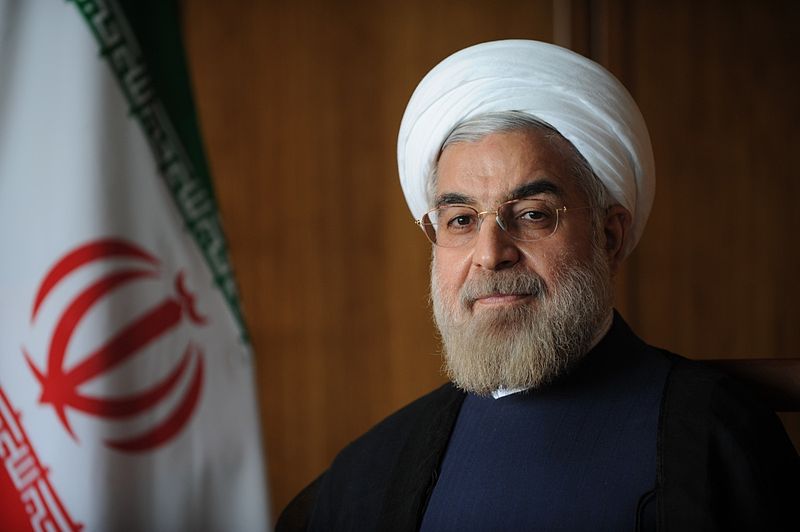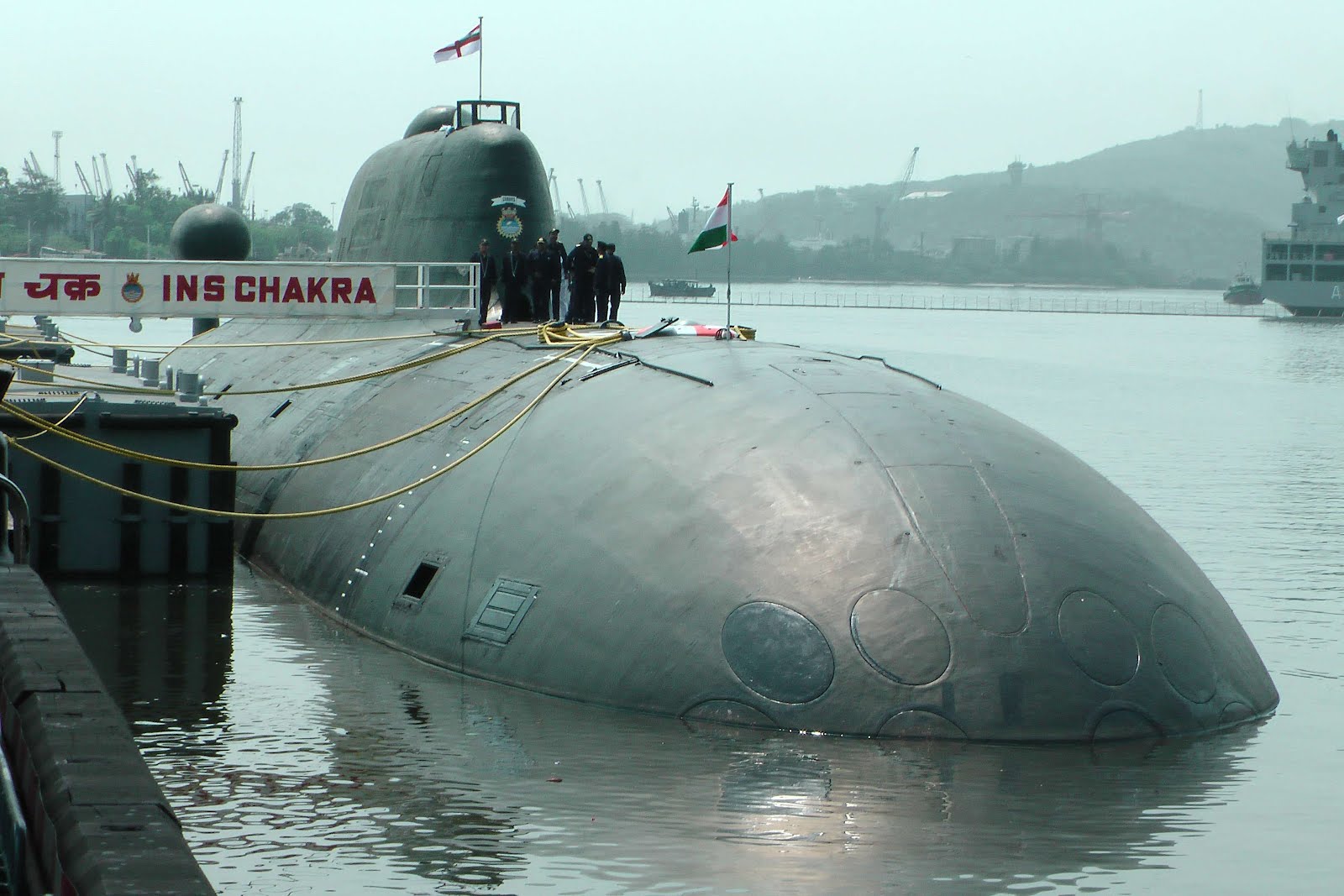China is currently engaged in a bitter dispute with the Philippines over the sovereignty of maritime islands in the South China Sea. While other countries,namely Vietnam, Taiwan and Malaysia, are also involved in regional territorial claims , China’s dispute with the Philippines recently gained considerable international attention. The disagreement has remained peaceful thus far, but an increase in naval activity from both China and the Philippines is a reason for international concern. Matters were further complicated after the US signed the EDCA (Enhanced Defense Cooperation Agreement) in support of the Philippines.
According to territorial claims dating as far back as 1947, China claims the Spratly and Paracel islands along with the Scarborough Shoal. Beijing holds that these areas remain a part of the Hainan province and have been an integral part of the country for over 2000 years.
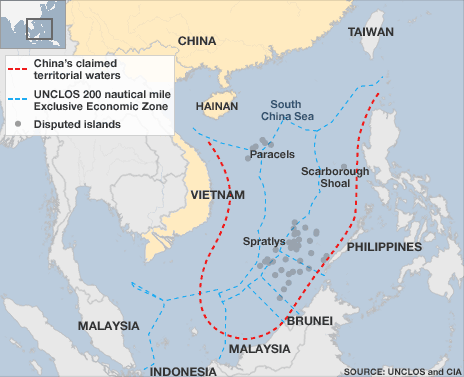
In recent years, this area has been dubbed as the nine-dash line. The Philippines’ claim to the islands is based on geographic proximity as the islands are considerably closer to the Philippines than to China. For example, the Scarborough Shoal is 100 miles away from the Philippines and 500 miles away from China. Similarly, the Spratly Island are closer to the Philippines than to China. Moreover, since the second world war, many of these islands became inhabited with Filipinos and some are even manned by the Philippines’ navy.
Tensions between the two countries escalated in 2012 when a Philippine naval vessel attempted to oust Chinese fishing vessels from the Scarborough Shoal. A naval standoff ensued until the US managed to negotiate a peace agreement between the two countries that required both navies to leave. The Chinese Navy never left, but continues to harass fishing boats and research vessels in the area.
Although Washington has followed its promise to refrain from entering into sovereignty disputes, the signing of the EDCA may indicate a shift in American policy to “contain” China with buffer states to limit its influence.
Since then, China has been using the “Cabbage Strategy” on some islands controlled by the Philippine’s navy. Chinese naval vessels, fishing boats and other ships encircled these poorly manned islands, preventing supplies from reaching soldiers. China is trying to gain control of the islands by forcing the Philippines’ navy away. This strategy was very successful in the dispute over the Ayugin shoal that the China currently controls.
Motivations behind the dispute appear to revolve around large deposits of natural resources that allegedly lie around the islands. Although the amount of research and geographical surveys have been insufficient for accurate projections, Chinese experts estimate that there can be as much as 200 billion barrels of oils in the area, based on the data of nearby islands. American scientists make more modest extrapolations, estimating that a total of 28 billion barrels lies in the in the area. In either case, the more significant resource may be the natural gas reserves that are estimated at 25 trillion cubit meters. There are also mineral deposits in the area which can be especially vital to China given its industrial needs.
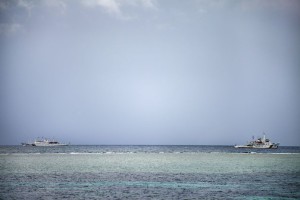
In recent years, China has been acting more aggressively towards its neighbors, becoming involved in a wide variety of territorial disputes. The Senkaku/Diaoyu islands dispute is another example of sovereignty dispute that came to prominence, in part, due to the deployment of the Chinese navy. Some scholars believe that China’s recent pursuit of maritime islands in the South China Sea is part of a long-term expansionist policy of gaining control of the South China Sea. Chinese foreign policy is carefully controlled by top officials and is often planned years in advance. An estimated 5.3 trillion dollars worth of goods travels across the South China Sea annually. Control over the shipping lanes will significantly increase China’s soft power and influence in the area.
Maintaining the freedom of international waters is often considered one of the quintessential elements of American foreign policy. Imports and exports form a massive component of the US economy. Over 1.2 trillion dollars of goods that pass through an American port also pass through the South China Sea. Although Washington has followed its promise to refrain from entering into sovereignty disputes, the signing of the EDCA may indicate a shift in American policy to “contain” China with buffer states to limit its influence. The EDCA will allow the US to inspect the Philippines’ armed forces, participate in training exercises and build military bases on Philippine territory for the next ten years. The Obama administration is quick to deny that the EDCA is aimed at China. However, this is the second time in the past year that the US has increased its military presence in a small nation with territorial disputes with China in the South China Sea. While Beijing has yet to reply to the recent development, international observers are concerned as tensions between the two superpowers escalate as they increase naval activity in the South China Sea.

